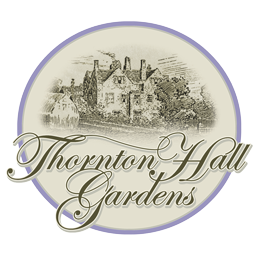Thornton Hall was built around 1550 by Ralph Tailbois. Today, the Hall is one of the oldest buildings in Borough of Darlington.
Thornton Hall Owners
- 1550 - 1591 - Ralph Tailbois
- 1591 - 1606 - Robert Tailbois
- 1606 - 1610 - Thomas Salvin
- 1610 - 1620 - John Salvin
- 1620 - 1624 - Henry Bowes
- 1624 - 1677 - Sir Francis Bowes
- 1677 - 1697 - Sir Francis Bowes (2)
- 1697 - 1752 - George Wanley Bowes
- 1752 - present day - Thoroton and Croft Trust
Tailbois
There is no authentic account in the various histories of the exact date when Thornton Hall was built. We do know that an heiress of "Thornton of Thornton" married a Tailbois from Hurworth and that the ciphers of one Ralph Tailbois are to be seen to this day on the ceiling of what was once an entrance-hall. We, therefore, take it for granted that Ralph Tailbois either built Thornton Hall on the site of a much older house or improved the ancient structure, adding to and in other ways embellishing it around 1550. Unfortunately, none of the local historians have put forth anything like a complete account of Thornton Hall so I will try to piece together the scanty information we do have.
Ralph Tailbois married twice, his first wife being Eleanor, the second Jane Bertram whose ciphers are also to be found on the heavily carved oak beams in the old entrance hall, which is now the kitchen. Ralph remained loyal at the time of the "Rising of the North" and he received a grant from Queen Elizabeth 1st of much property including the estates at Ulnaby and Carlbury. It is possible with his newly acquired wealth he replaced the ancient manor?
Ralph Tailbois died in 1591 and was buried in St Edwin’s Church, High Coniscliffe, his name being fifth in the earliest church register. He was succeeded by his son Robert Tailbois who married the daughter of Richard Barnes Bishop of Durham and "died a prisoner in Durham Gaole in 1606" he was the last of this line of Tailbois. It is thus evident that there was a Thornton Hall, or house of some sort, previous to the reign of Queen Elizabeth 1st.
Salvin
In 1606 Thornton Hall passed into the hands of Thomas Salvin of Croxdale who died in 1610. He was succeeded by his son John Salvin, who was the grandson of Gerald Salvin Esquire, of Croxdale, the direct descendant and representative of one of William the Conqueror’s knights, but having no male heir the estate was sold to the Bowes family.
Bowes
Henry Bowes a merchant adventurer and Sheriff of Newcastle and as such a man of considerable means, bought Thornton Hall in 1620, he died in 1624 and was succeeded by his son Sir Francis Bowes.
Sir Francis Bowes was an active supporter of Charles 1st, who suffered heavily for it afterward. He is buried in the chancel of St Edwin’s Church, High Coniscliffe, a fine ledger stone covers his grave, displaying the shield engraved with the Arms of the Bowes impaled with Delaval - he had married Margaret Delavel of Cowpen, Northumberland.
His son Sir Francis Bowes (2) succeeded to the property and died in 1697. He erected a large marble monument on the north wall of the chancel in St Edwin’s Church, High Coniscliffe in memory of a kind father and loving mother.
George Wanley Bowes was the next and last Bowes to own Thornton Hall. He had no heir only three daughters who came into the property in 1772. One daughter married Lieutenant Colonel Thomas Thoroton from the Coldstream Guards whilst another married the Reverend Robert Croft from Stillington in Yorkshire. The share in the estate of Margaret Bowes a third daughter became vested in the estate of her two sisters, which is still known to this day as the Thoroton and Croft Trust. An Act of Parliament was passed to enable Colonel Thomas Thoroton and the Reverend Robert Croft to lease their respective settled estates.
Towards the end of the 18th century, upon the death of the last of the Bowes family residing at Thornton, the old world glories of the Hall gradually faded away. It merged into a farmhouse, extensive orchards and cattle-houses taking the place of the Jacobean gardens and stabling of bye-gone days.











